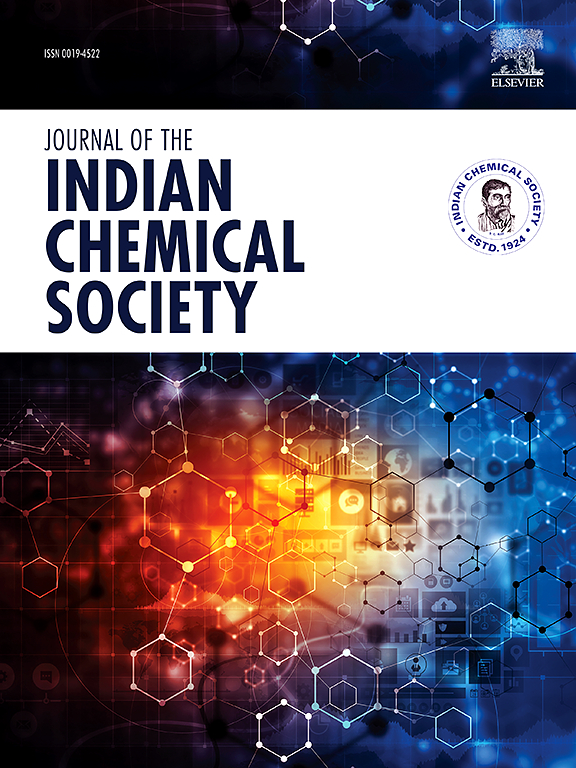Facile fabrication of NiCo2O4/PANI nanocomposite for supercapacitors
IF 3.2
4区 化学
Q2 CHEMISTRY, MULTIDISCIPLINARY
引用次数: 0
Abstract
The need for energy has increased globally as a result of recent industrial expansion. Supercapacitors are becoming more and more popular due to their exceptional qualities that can be used to meet energy demands. PANI/NiCo2O4 that has been hydrothermally produced is ideal for use as an electrode material. Several methods, like as charge-discharge along with electrochemical impedance spectroscopy, were applied to confirm its electrochemical parameters. The material PANI/NiCo2O4 nanocomposite showed better results compare to the NiCo2O4. According to the GCD results, the PANI/NiCo2O4 and NiCo2O4 demonstrated a specific capacitance of 1185.2 F/g and 577.7 F/g respectively. The resulting PANI/NiCo2O4 electrode material has 307 W/kg power density along with 62.1 Wh/kg energy density. The synthesized NiCo2O4/PANI exhibited exceptional retention following the 5000th cycle. According to the results, the composite material's electrochemical calculation was much better than that of the pure material, enabling more effective charge storage. The outstanding performance of PANI/NiCo2O4 nanomaterial indicates its considerable potential for upcoming technology for energy storage.
超级电容器用NiCo2O4/PANI纳米复合材料的简易制备
由于最近的工业扩张,全球对能源的需求增加了。超级电容器由于其特殊的品质,可以用来满足能源需求,正变得越来越受欢迎。经水热法制备的聚苯胺/NiCo2O4是理想的电极材料。采用充放电、电化学阻抗谱等方法对其电化学参数进行了确定。与NiCo2O4相比,PANI/NiCo2O4纳米复合材料表现出更好的性能。根据GCD结果,PANI/NiCo2O4和NiCo2O4的比电容分别为1185.2 F/g和577.7 F/g。所得PANI/NiCo2O4电极材料的功率密度为307 W/kg,能量密度为62.1 Wh/kg。合成的NiCo2O4/PANI在第5000次循环后表现出优异的保留率。结果表明,复合材料的电化学计算能力大大优于纯材料,可以实现更有效的电荷存储。PANI/NiCo2O4纳米材料的优异性能表明其在未来的储能技术中具有巨大的潜力。
本文章由计算机程序翻译,如有差异,请以英文原文为准。
求助全文
约1分钟内获得全文
求助全文
来源期刊
CiteScore
3.50
自引率
7.70%
发文量
492
审稿时长
3-8 weeks
期刊介绍:
The Journal of the Indian Chemical Society publishes original, fundamental, theorical, experimental research work of highest quality in all areas of chemistry, biochemistry, medicinal chemistry, electrochemistry, agrochemistry, chemical engineering and technology, food chemistry, environmental chemistry, etc.

 求助内容:
求助内容: 应助结果提醒方式:
应助结果提醒方式:


